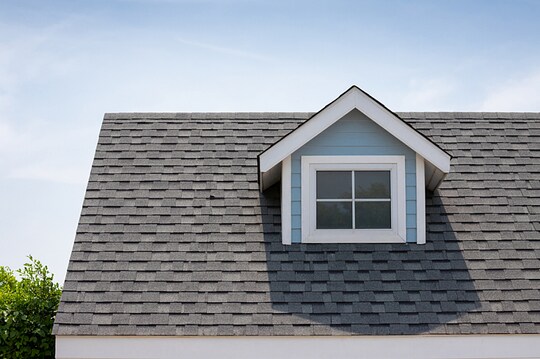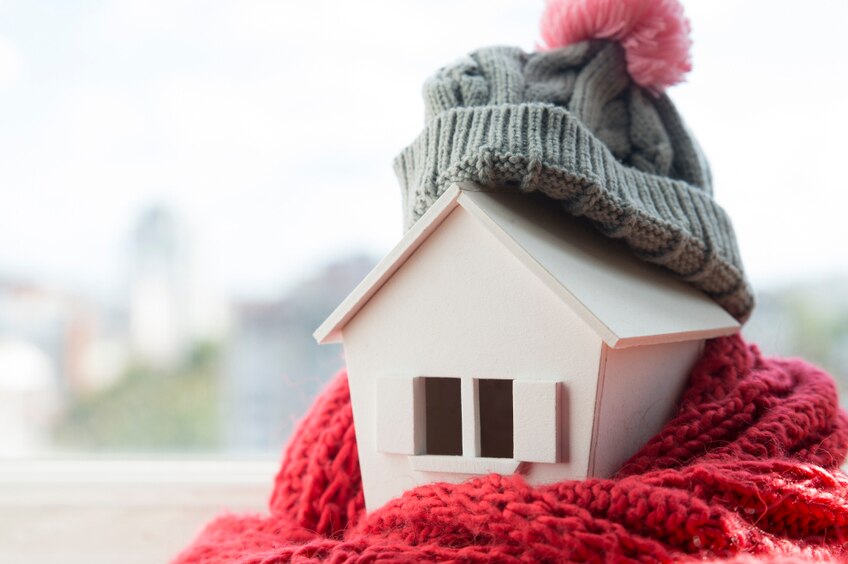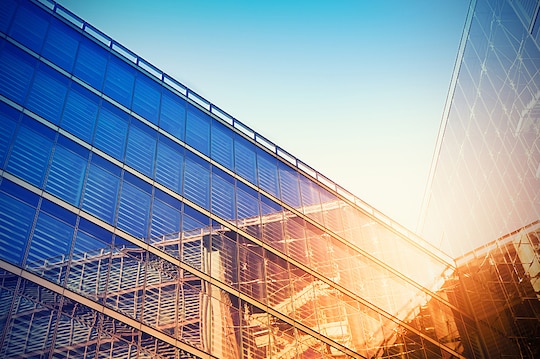
Cool roofs can help save you money on energy bills* in the North as well as the South. Here are some cool truths to ponder when planning a new roof.*
TRUTH 1: It's All About Reflectivity
A cool roof reflects the sun's rays away from the roof, helping to reduce rooftop temperatures. Un toit noir qui absorbe la lumière solaire peut atteindre une température de 190 °F en été, alors qu'un toit réfléchissant peut réduire la température de 55 °F. Les surfaces foncées contribuent également au phénomène des îlots de chaleur en milieu urbain. (SOURCE: heatisland.lbl.gov/coolscience/cool-roofs)
A cool roof reflects away the sun's rays, unlike a dark roof which absorbs them and transfers heat to the building below.
About Heating & Cooling Degree Days:
These units of measure describe how far the average daily temperature varies from a baseline of 65°F. Temperatures greater than 65°F are cooling-degree days, because we need to cool the environment back to 65°F. Heating-degree days occur when the temperature falls below 65°F.
TRUTH 2: On Average, Electricity Costs Up to 4 Times More, Per BTU, Than Natural Gas
If your building uses electric air conditioning and natural gas heat, a cool reflective roof can help lower your cooling costs* no matter where you are in the continental United States (including Northern States) by reducing the amount of air conditioning needed.
On average, electricity costs up to 4 times more, per BTU, than natural gas. Not only is electricity more expensive than gas, but the rate structures are more complex. Seemingly small increases in electricity use can result in large additional costs due to the compounding effects of time of demand charges based on a few peak minutes of electricity usage during each billing period.
What are "Demand Charges?"
Simply put, demand charges are the immediate usage put on your energy system. Some electric companies charge commercial and industrial buildings a demand charge penalty based on a few peak minutes of electricity usage during each billing period. Buildings that use the most electricity at one time often get charged the largest penalty, which can be up to 30 -70 % of their total electricity bill. Air conditioners, by their nature, surge electricity demand at peak times of the day. Cool roofs can help reduce the air conditioning needed by your building by eliminating the extra heat that would be absorbed by a black roof.
TRUTH 3: Dark Roofs Increase the Need for Air Conditioning
Dark roofs not only drive up monthly electricity-consumption costs, they can significantly increase demand charges as well. Less demand can mean less money spent to cool the building.*
TRUTH 4: A Black Roof Covered in Snow is White
Your roof's potential impact on building energy usage is based on the amount of sunlight reaching it, not on the ambient temperature. So even in regions with more "heating degree days" than "cooling degree days" a reflective cool roof can offset more hours of sunlight in summer than a dark roof can absorb to heat the building in winter; almost twice as many at the solstices. And, of course, during those long winter nights, sunlight is having no effect on your roof at all. Add to that the fact that a dark roof covered in snow is, effectively, a white reflective roof. A snow-covered black roof reflects the sun's rays but in the summer, it can become a heat-absorbing sponge.
Truth 5: A Properly Designed Roof Reduces the Risk of Condensation
A properly designed roof can offset condensation in a variety of ways, including using multiple layers of insulation with staggered joints, installing GAF SA Vapor Retarder, or installing a fully adhered system, to just name just a few options.
Truth 6: Cool Roofs are Changing the Roofing Industry
Commercial buildings are benefiting from cool roof savings throughout the USA, even in Northern climates, and that is fundamentally shifting the roofing marketplace. For example, EPDM was the most popular single-ply membrane in the industry in 2003. Today, TPO makes up over 50 % of the single-ply market.
GAF offers a wide range of cool roofing technologies including:
Single-Ply — available in both TPO and PVC, single-ply membranes are among the most commonly installed roofing technologies due to the speed of installation and the variety of systems available.
Asphaltic — available in BUR, APP, and SBS, asphaltic systems are great, time-tested multi-ply systems that can be installed in a variety of systems.
Coatings — available in acrylics, silicones, urethanes, PMMAs, and PVDFs, the GAF line of coatings can preserve and restore existing roofs.
For more information on maintenance plans, guarantee extension details, or to be connected with a GAF maintenance professional, please visit our building owner and property manager resources page.
*Energy cost savings are not guaranteed and the amount of savings may vary based on climate zone, utility rates, radiative properties of roofing products, insulation levels, HVAC equipment efficiency, and other factors.



